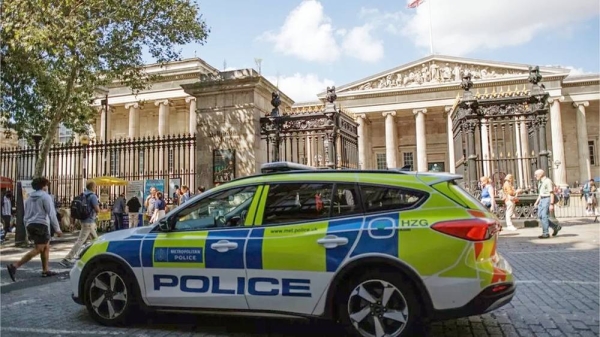
The very first commemorative blue plaque was awarded in 1867, in honour of the poet Lord Byron at his house and birthplace in Holles Street, near Cavendish Square in London.
But the plaque – the first in a long, prestigious tradition of recognising some of the most influential figures in history – was lost when the house was demolished in 1889.
Though a new plaque was made for Byron it did not last much longer than the first, and today, the site is occupied by the Oxford Street branch of John Lewis.
Now, English Heritage is calling on the public to help find those two plaques and dozens of others that the charity says have gone missing over the decades owing to war damage, demolition or building refurbishments.
As many as 50 blue plaques have been categorised as missing, including those commemorating the painter David Wilkie, the novelist Henry Handel Richardson, the artist William Hogarth, the poet John Milton, the naturalist Francis Trevelyan Buckland, the astronomer Francis Baily and the composer Arthur Sullivan.
According to English Heritage, many would have been collateral damage during the periods of rapid modernisation and architectural experimentation that characterised London during the 20th century.
The charity said it was keen to see any surviving plaques returned so that they can be conserved and even re-installed at a different address, if any can be found.
It said most of the lost plaques dated from the time when the London county council ran the scheme, and will bear that name on them, or the initials “LCC”. Most are ceramic roundels – like the plaques of today – but may be blue, brown or terracotta in colour.
To coincide with the call-out, the charity also announced a new plaque to honour the surgeon Joseph Lister, whose original plaque disappeared (for the second time) during building work in 2017.
“These lost plaques are still part of the story that the London blue plaques scheme has been dedicated to telling for the past 158 years,” said the English Heritage curatorial director, Matt Thompson. “The story, not just of London, but of the breadth of human endeavour.
“Whether they are on a building for all to see or safely in our stores along with others already returned to us, each plaque documents the history of what is arguably the oldest commemorative scheme in the world. That is why we would like to find out if any of the ‘lost’ plaques survive and why I’m so delighted that one of the pioneers of modern surgery, Joseph Lister, gets another chance to be commemorated.”
Lister was originally commemorated by the LCC at 12 Park Crescent in Marylebone in 1915. The crescent was rebuilt in facsimile in 1960 after war damage and a new plaque commissioned – but the original rectangular bronze tablet turned up after an appeal in The Lancet. It was re-erected in 1966, where it remained for 51 years, disappearing again in 2017. It has yet to be found.
The new plaque will mark another of Lister’s homes at 52 Maple Street (formerly 28 London Street), Fitzrovia. The four-storey Grade II-listed terrace house, built in the late 1700s, lies within direct sight of University College hospital and Lister is recorded at this address in the UCL student register for 1844. On 2 April that year he wrote to his mother to say he was “pretty much settled in here” and anticipating “a pleasant residence”.












